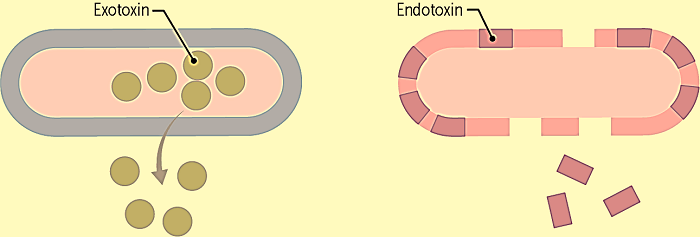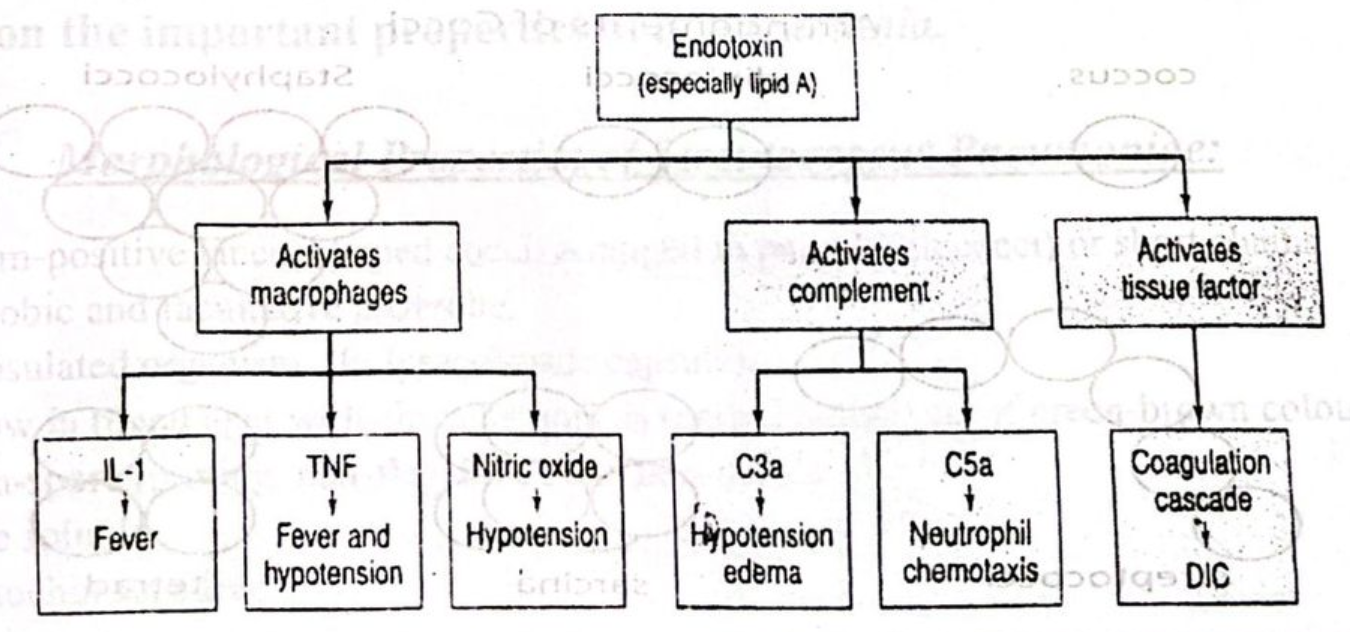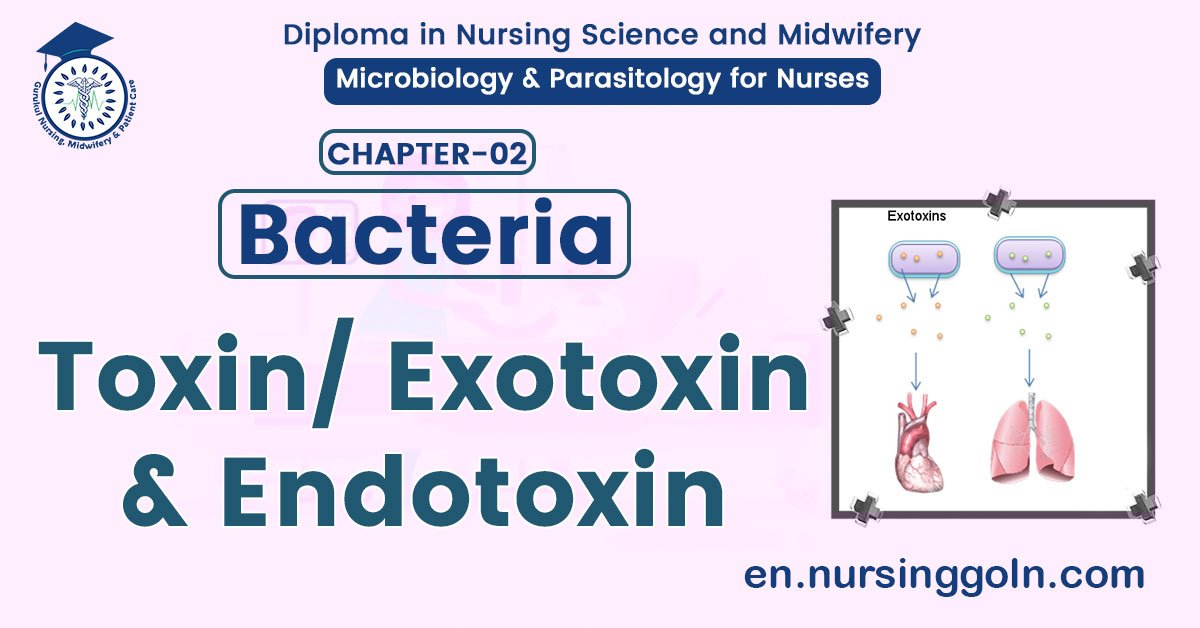Toxin/ Exotoxin and Endotoxin – Basic microbiology, parasitology, and immunology; nature, reproduction, growth, and transmission of common microorganisms and parasites in Bangladesh; prevention including universal precaution and immunization, control, sterilization, and disinfection; and specimen collections and examination. Students will have an understanding of common organisms and parasites caused human diseases and acquire knowledge about the prevention and control of those organisms.
Toxin/ Exotoxin and Endotoxin
A toxin is a chemical substance which damages an organism. A toxin may be as simple as an ion or atom which negatively interferes with a cell. A toxin can also be in the form of complex molecules such as the proteins eins found in snake venom.
or
A toxin is a poisonous substance that is very unstable and toxic when introduced to human tissue. A toxin is a certain product of the metabolism of a living organism.

Definition of Exotoxin:
Exotoxins are highly toxic chemical substances, protein or polypeptide in nature, which are actively secreted by certain species of some Gram positive & Gram negative bacteria and contributes a major part to bacterial virulence,
Definition of Endotoxin
Endotoxins are chemically lipopolysaccharides, an integral part of cell wall of most Gram negative bacteria, liberated when bacteria are disintegrated; and perform various toxic effects to the host
Differences Between Exotoxin & Endotoxin:
| Traits | Exotoxin | Endotoxin. |
| Source | Certain species of some Gram positive & Gram negative bacteria. | Cell wall of most Gram negative bacteria. |
| Secreted from cell | Yes | No (liberated only after the death of the bacteria). |
| Chromosome | Multiple | Single |
| Division | Mitosis | Binary fission |
| Chemistry | Protein or polypeptide | Lipopolysaccharide |
| Solubility | Soluble substance. | Insoluble. |
| Location of gene | Plasmid or bacteriophage | Bacterial chromosome. |
| Clinical effects | Various effects. | Fever & shock |
| Mode of action | Various modes | Includes TNF (tumour necrosis factor) & IL-1 |
| Antigenicity | Produce neutralizing antitoxin | Poorly antigenic |
| Vaccines | Toxoids (modified exotoxin) used as vaccines. | No toxoids formed & no vaccine available. |
| Heat stability | Destroyed rapidly at 60°C. | Stable at 100°C for 1 hour. |
| Typical diseases | Tetanus, botulism, diphtheria | Meningococcemia, sepsis by Gram- negative rods. |
| Formation of toxoid | Yes | No |
Important exotoxin producing bacteria & the toxin produced by them:
| Bacteria | Exotoxin produced by them |
| E. coli | Enterotoxin, Shiga-like toxin |
| Corynaebacterium diphtheriae | Diphtheria toxin |
| Clostridium tetani | Tetanospasmin, Tetanolysin |
| Celosvidium botulinom | Botulinum toxin |
| Vibrio cholera | Cholera toxin |
| Staphylococcus aureus | Enterotoxin Toxic shock syndrome toxin Exfoliatin. |
Exotoxin:
Exotoxins are highly toxic chemical substances, protein or polypeptide in nature, which are actively secreted by certain species of some Gram positive & Gram-negative bacteria and contribute a major part to bacterial virulence.
Criteria Of Exotoxin:
- Protein in nature.
- Actively secreted by bacteria
- Heat labile, i.e. destroyed by heat.
- Highly antigenic.
- Produces neutralizing antitoxin.
- Have specific tissue selecting property with specific pattern of effects.
- Toxoid can be produced from them, so vaccination against them is possible.
Important Exotoxin Producing Bacteria With The Diseases:
| Exotoxin Producing Bacteria | Diseases: |
| Corynebacterium diphtheriae | Diphtheria |
| Clostridium tetani | Tetanus |
| Clostridium botulinum | Botulism |
| Clostridium difficile | Pseudomembranous colitis |
| Clostridium perfringens | Gas gangrene |
| Bacillus anthracis | Anthrax |
| Staphylococcus aureus | Toxic shock syndrome, food poisoning, scalded skin syndrome |
| Streptococcus pyogenes | Scarlet fever |
| Escherichia coli | Watery diarrhoea, bloody diarrhoea |
| Vibrio cholerae | Cholera |
| Bordetella pertussis | Whooping cough. |
Three Potent Exotoxins:
- Cholera toxin.
- Tetanus toxin.
- Botulinum toxin
Endotoxin:
Endotoxins are lipopolysaccharides, an integral part of cell wall of most Gram negative bacteria, liberated when bacteria are disintegrated; and perform various toxic effects to the host.
Properties of Endotoxin:
- Lipopolysaccharide in nature.
- Integral part of bacterial cell and liberated only after the death of bacteria.
- Relatively heat stable.
- Less antigenic.
- Not produces neutralizing antitoxin.
- No specific tissue selecting property and all endotoxins have almost similar pattern or effects.
- Toxoid cannot be produced from them, so vaccine cannot be produced against them.
Important Endotoxin Producing Bacteria:
- E. coli
- Klebsiella
- Salmonella
- Shigella
- Proteus

Patho-Physiological Effects Of Endotoxin:

Read More….
